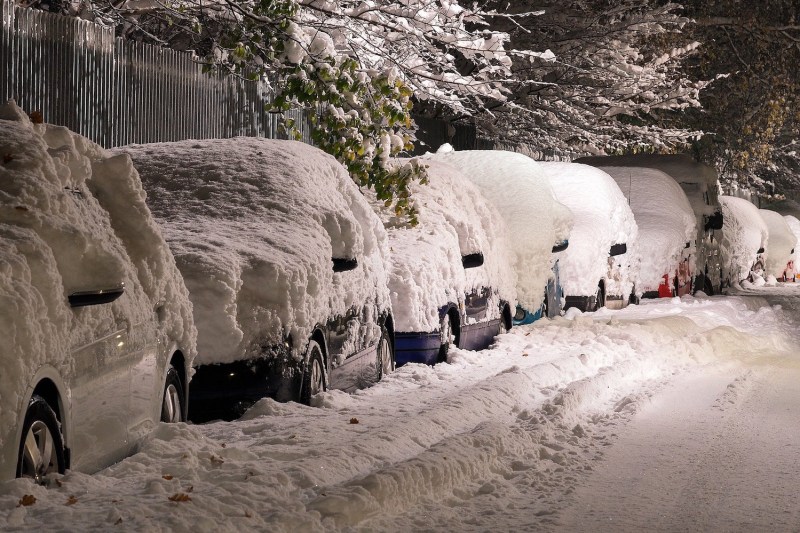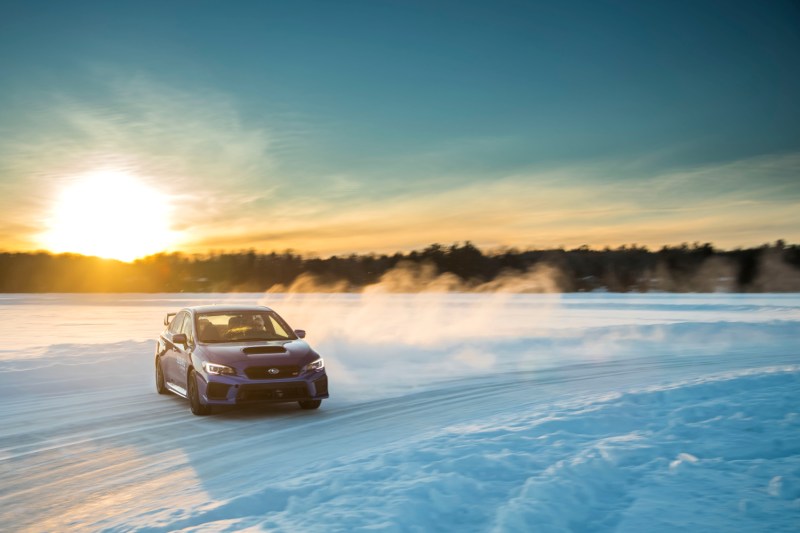Winter is an extremely rough season on your car. Even if you live in an area where they measure snowfall in inches instead of feet, cold temperatures can have a drastic impact on your vehicle. Normally, you’d want to winterize your car before cold weather hits, but it’s never to late to get your car prepared to tackle frigid temperatures and some snow. Failing to do so could leave you stranded, in need of an emergency repair, or on the back foot in freezing temperatures.
Winterizing your car depends on a lot of factors, including where you live, what kind of car you have, and the age of your vehicle. So, while there are certain things every driver can do to winterize their car, a true one-size-fits-all method doesn’t exist. Still, this guide can help you get your car ready for winter and colder months.
To get an expert’s opinion on the best way to winterize your vehicle, we reached out to Rick Ricart, President of Ricart Automotive Group in Columbus, Ohio. He’s kindly shared a few tips for safe winter driving and key areas to keep an eye on when you're winterizing your car.
Wash and Wax Your Car
Before the weather gets really inhospitable, wash and wax your car. Washing your car will give you a look at any scratches or trouble spots that should be prepared before winter. The majority of northern states in the U.S. use road salt to ensure roads don’t freeze over. While road salt helps keep roads clear and free of any black ice, it’s a nightmare for paint and can cause scratches, dents, and open gashes to rust. If you're looking for the best car soaps on sale, check out your handy guide.
Waxing your car before you drive in the snow is also an important step. Waxing your vehicle adds an extra layer of protection to your paint, further helping your paint against harmful chemicals that some states use to stop roads from freezing over and the elements. Spending some extra time waxing your vehicle before it starts to snow should result in protection throughout the entire winter. You don't have to spend a fortune to find a great wax and to help you with the process, we have a list of the eight best waxes available today.

Check Your Tires
No matter how good all-season tires are, they can’t compare directly to a dedicated set of winter tires. Even vehicles with all-wheel drive or four-wheel drive perform better when they’re fitted with winter tires. Very few consumers will actually need snow chains and they’re only legal in a few states. So, if you’re looking to get extra traction in winter, a set of dedicated winter tires is a better bet.
If you don’t have the budget or the space to store a complete set of winter tires, the next best thing to do is to check your tires. If you only decide to do one thing this winter, check your car's tires. Visually looking at your tires is a great way to do a baseline check on their condition. If they’re flat, cracked, discolored, or low on tread, it’s time to replace them.
An easy way to see if your tire has enough tread is to grab a penny and insert it into one of your tires’ grooves between the treads. With Lincoln’s head facing upside down and toward you, check to see how much of his head is visible. If you see all of Lincoln’s head or a lot of it, your tire doesn’t have much tread left, which means less traction in winter conditions. Check roughly 10 areas on all of your tires before exploring replacements.
Another important thing to check on your tires is tire pressure. Every 10-degree drop in external temperature can result in a one-pound loss in air pressure. A sticker on the inside of your car’s door jam will tell you exactly how inflated your tires should be when they’re cold. Carefully fill up your tires to the correct number and keep an eye out for leaks or drops in pressure as temperatures drop.
Ricart also emphasizes how important tires are in winter:
"The first thing is tires. Traction is a big part of safe winter driving - not just getting traction accelerating but also when you’re braking. It all goes back to tread depth and making contact with the road. Ensure that your tires aren’t overworn and monitor your tire’s tread depth."
Become Familiar With Your Car
If you recently purchased a new vehicle or have never driven your car in snowy conditions, it’s a good idea to become acquainted with it while the weather’s still good. If your vehicle has a traditional four-wheel-drive system, check your vehicle’s user manual to see how it works. Some vehicles are equipped with differential lockers that can provide even more traction in tricky situations. These tend to require a little more effort to engage than a four-wheel-drive system and can only be engaged in certain conditions.
While all-wheel-drive systems work automatically, it’s still a good idea to check the user manual for available drive modes that can improve traction in wintery conditions. It’s also a good idea to learn where the traction control button is in case you need to turn it off.

Complete Preventative Maintenance
As someone that had to change all three accessory belts in the middle of winter in Detroit, MI on my old Toyota 4Runner, I cannot stress how important this is. If you think your car needs an oil change, new brakes, new belts, new windshield wipers, or any other type of routine maintenance, it’s best to get the repairs completed before winter arrives.
Even if you’re not a DIYer, it's best to take your vehicle to a dealership or a repair shop, getting your vehicle in the best condition possible will ensure you’re not stranded on the side of the road during a snowstorm. While it’s best to give your vehicle a thorough once-over every winter, here’s a shortlist of things to keep an eye on during winter.
- Battery
- Engine Oil
- Accessory Belts/Drive Belt
- Air Filter
- Hoses
- Cooling/Heating System
- Windshield Washer Fluid
- Windshield Wipers
- Lights
- Spare tire
Ricart advises owners to pay special attention to fluids and windshield wipers:
"Then, make sure your car is in good condition for the season. Top off your fluids and ensure your wipers are high-quality and working properly. Wipers move more than just water - they help move ice and unwanted road grime."
Check Coolant Level and Mixture
While it’s a good idea to check all of your car’s major components before winter, your engine’s cooling system requires extra attention. For consumers that live in especially cold areas, getting your car’s coolant mix right is crucial.
There are a variety of available coolants at your local automotive store and finding the right one can be tricky. The best thing to do is to look at your car’s manual or to ask your local dealer. The majority of coolant on sale is sold premixed with a 50/50 dilution of coolant to water. If not, chances are that it’s undiluted, so you’ll have to mix it with distilled water. If you live in a climate where temperatures regularly drop down to 0 degrees Fahrenheit, read the coolant bottle to see what the correct dilution is for maximum protection.
Using the wrong ratio could see your coolant freeze at a certain temperature. A simple antifreeze tester is another good tool to have in winter, as it checks the radiator’s mixture to give you an idea of what temperature it will continue working in and if it needs to be replaced.
Pack an Emergency Kit
It may seem like a waste of space, but keeping an emergency kit in your car is a must. If you don’t want to spend time creating your own emergency kit or aren’t sure of what you should include, some companies sell pre-assembled kits with everything you need. If you’re interested in putting one together yourself, here’s what you’ll need.
- Blanket
- Ice scraper
- Non-perishable food
- Water
- Paper towels
- Jumper cables
- Flashlight
- Batteries
- First-aid kit
- Tool kit
- Extra clothes
If you really travel a long distance in winter and regularly take your car out, you might want to get a small container of kitty litter, salt, or rocks. If you’re stuck, you can spread these directly in front of your tires for extra traction. Some people also keep extra parts (belts, hoses, etc.), as well as coolant and windshield washer fluid, but if you’re driving a newer vehicle, you probably won't need these.

Take Your Time
This is another incredibly important thing that's relatively easy to do. You can do everything else in this article and drive like a rally driver after a night of snowfall and nothing will matter. Taking your time, which includes letting your car warm up and giving yourself plenty of extra time to get to your destination are crucial. You never know what roads will be like. And just because you’ve done your due diligence to get your car in working order doesn’t mean others would’ve done the same.
Additionally, if your car is covered in snow, take some time to clear it off. Don’t do one half of the car or just a few spots, either. Dress warmly, start your car, and clear the entire thing off. Snow left on your car could damage someone else’s vehicle, become a hazard on the road, or make it hard for other drivers to see. Don’t be the person driving with an entire snowman on your roof.
Patience is key when you're getting ready to head out onto the road in winter, claims Ricart. "Make sure to have patience in the morning before taking off. Let your car warm up and the engine expand. The cold won’t affect the car unless you’re fighting the cold."
Giving yourself plenty of time is crucial. Driving slower gives you more time to react to a dicey situation and is safer in changing conditions. Even if you have tons of experience driving in the snow, others may not. Driving cautiously won’t just help you get to your destination safely, it will also help other drivers on the road.
Ricart also recommends that you give other drivers plenty of space on the road. "Finally, while you’re on the road, give extra room between you and those on the road. You can check all the boxes above but not everyone else will. Don’t let them ruin your day - give them room on the road."
By winterizing your car and following some of these helpful tips, you'll be ready to tackle a snow-covered road with confidence.




